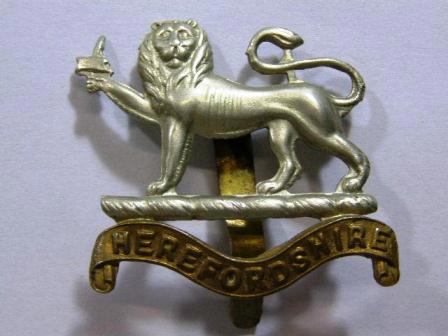27 November 1915
SUVLA - Captain Peter Ashton, 1st Herefordshire Regt, 158th Brigade, 53rd Division - Although there were many gullies at both Anzac and Helles, the location of most of the trenches up on the ridges and spurs meant that they were spared the worst of the floods, though communication through the formerly dry gullies was halted. But at Suvla the wide open spaces of the plain were crossed by several streams that were capable of catastrophic flooding.
 The 1st Herefords were most unfortunate as they occupied trenches running across the bed of the Azmak Dere. Normally there was only a barely visible trickle of water in the dry watercourse. At first nothing much seemed to be happening.
The 1st Herefords were most unfortunate as they occupied trenches running across the bed of the Azmak Dere. Normally there was only a barely visible trickle of water in the dry watercourse. At first nothing much seemed to be happening.
"Suddenly, without warning, a brown flood poured in. The water rose as you watched until it was about 3½ feet deep and then stopped. As I didn't want to drown I struggled out of the trench, and met the C.O. emerging from next door where the same thing had happened. It was quite obvious what had occurred. The very heavy rain, probably still heavier back in the hills, had suddenly transformed the Dere into a river again. The water had poured down from the high ground behind the Turks till it had got caught up behind their barricade. This, presumably, had held until there was a respectable weight of water behind it, when it collapsed and the whole tearing flood came rushing down at ours. It didn't gather, or pause for the twinkling of an eye at ours, it simply swept it away as if it hadn't been there, and swept on to the sea, a solid river, 20 yards wide and 8 or 9 feet deep. All our trenches opened out of the Dere, and though their floor level was higher than the bottom of the stream they were still deep enough to take in about four feet of water."
Ashton struggled through the flooded trenches to try and check on the situation in the front line which had been cut in two by the Azmak Dere. This left the machine guns vital to their defences marooned on the other side of the torrent.
"It wasn't possible to cross anywhere near the front line, so I went down stream about 300 yards, to a wide, pebbly place I remembered, and managed to get across. The water was about waist deep and running very strong. The Royal Engineers two wooden bridges had absolutely disappeared. On my way down stream I heard something snorting and blowing in the dark in the water, and I found it came from a little Turkish ammunition pony, which had come down stream and got caught in a bush. I put two men on to get him out, and he continued his career in the British Army. When I got across I walked overland to the front line, and found our two precious guns intact."
SOURCE:
P. Ashton quoted by C. H. Dudley-Ward, History of the 53rd (Welsh) Division, 1914-1918, (Cardiff: Western Mail Ltd, 1927), p.47-48.
